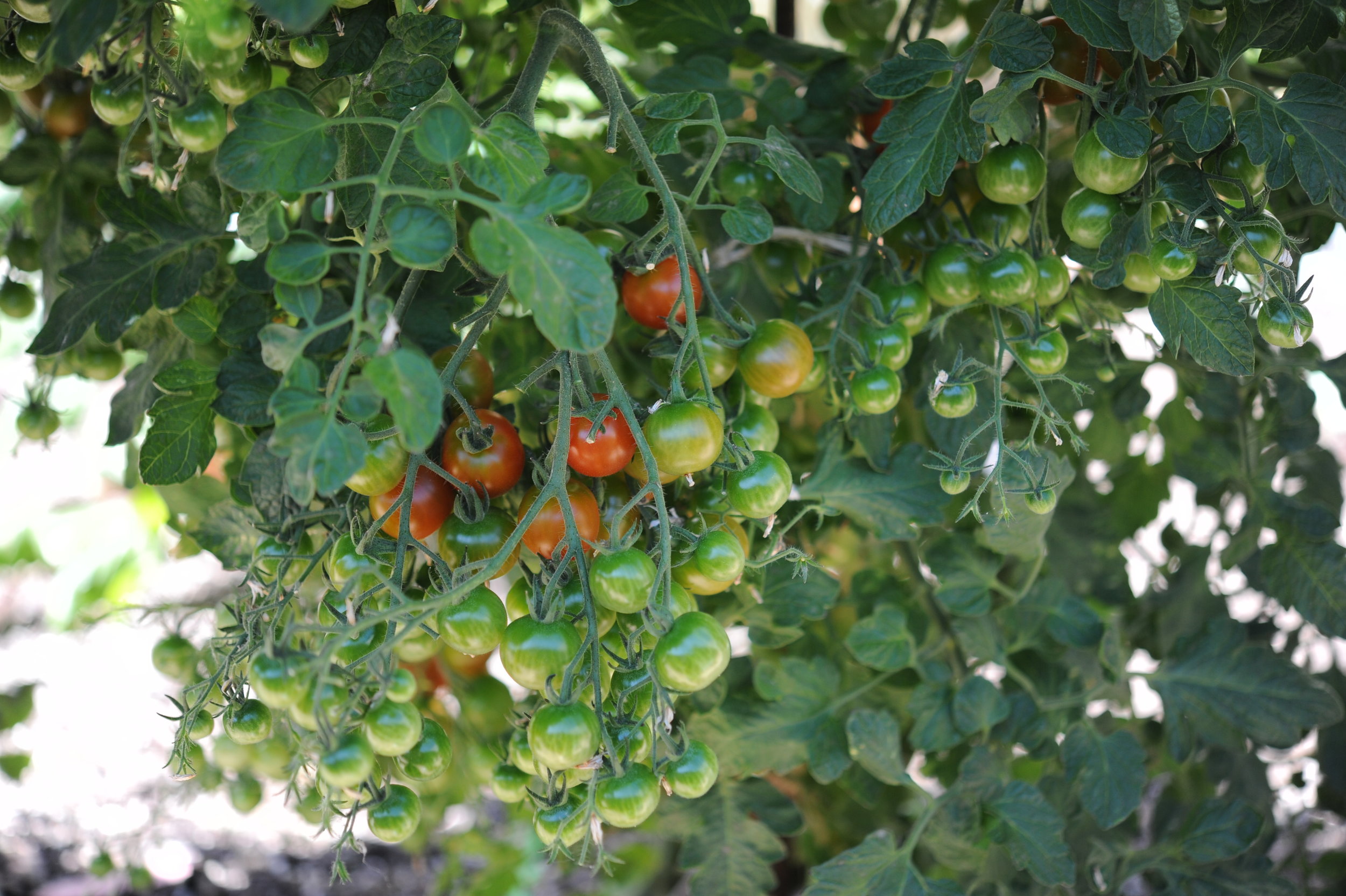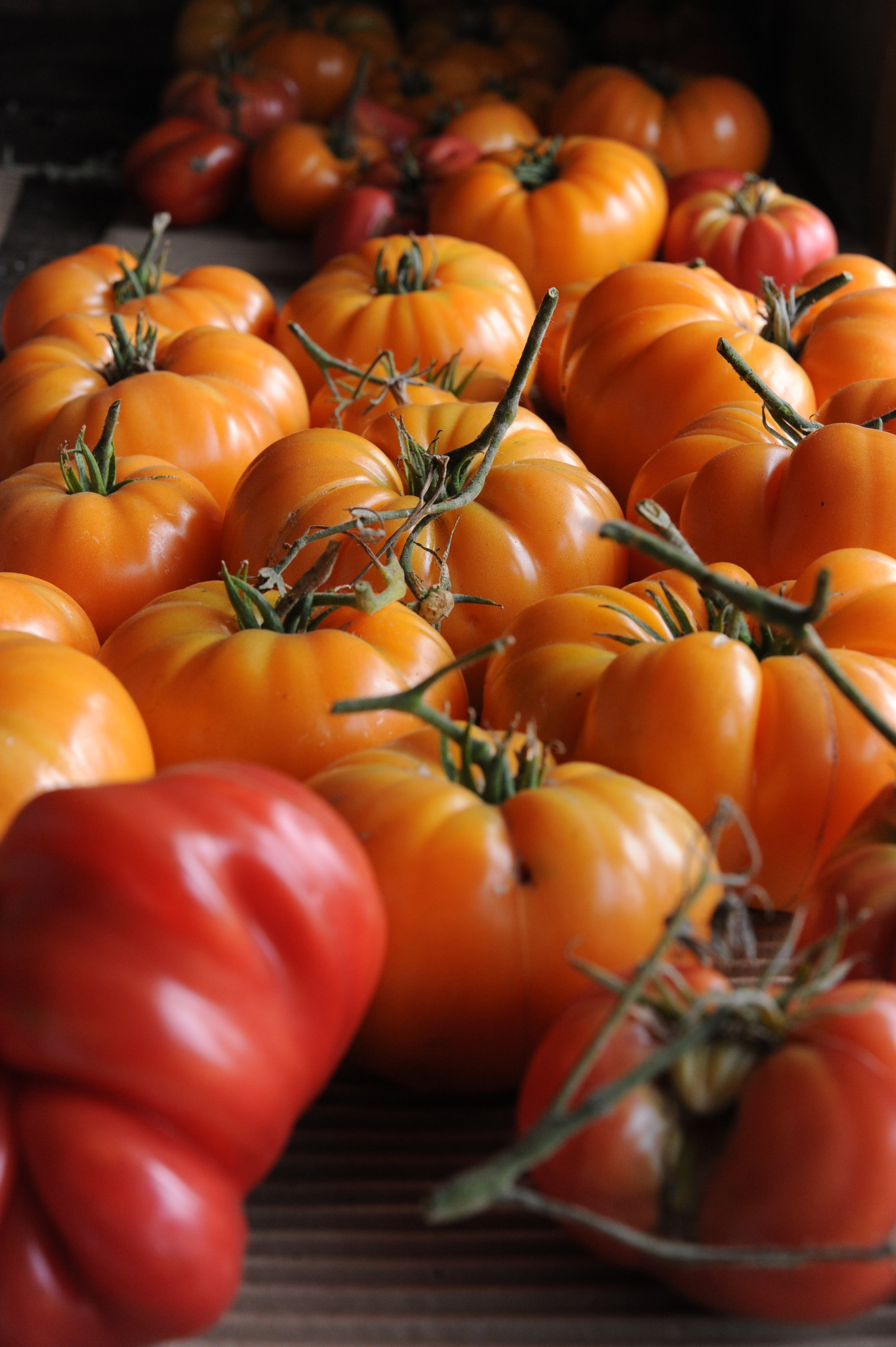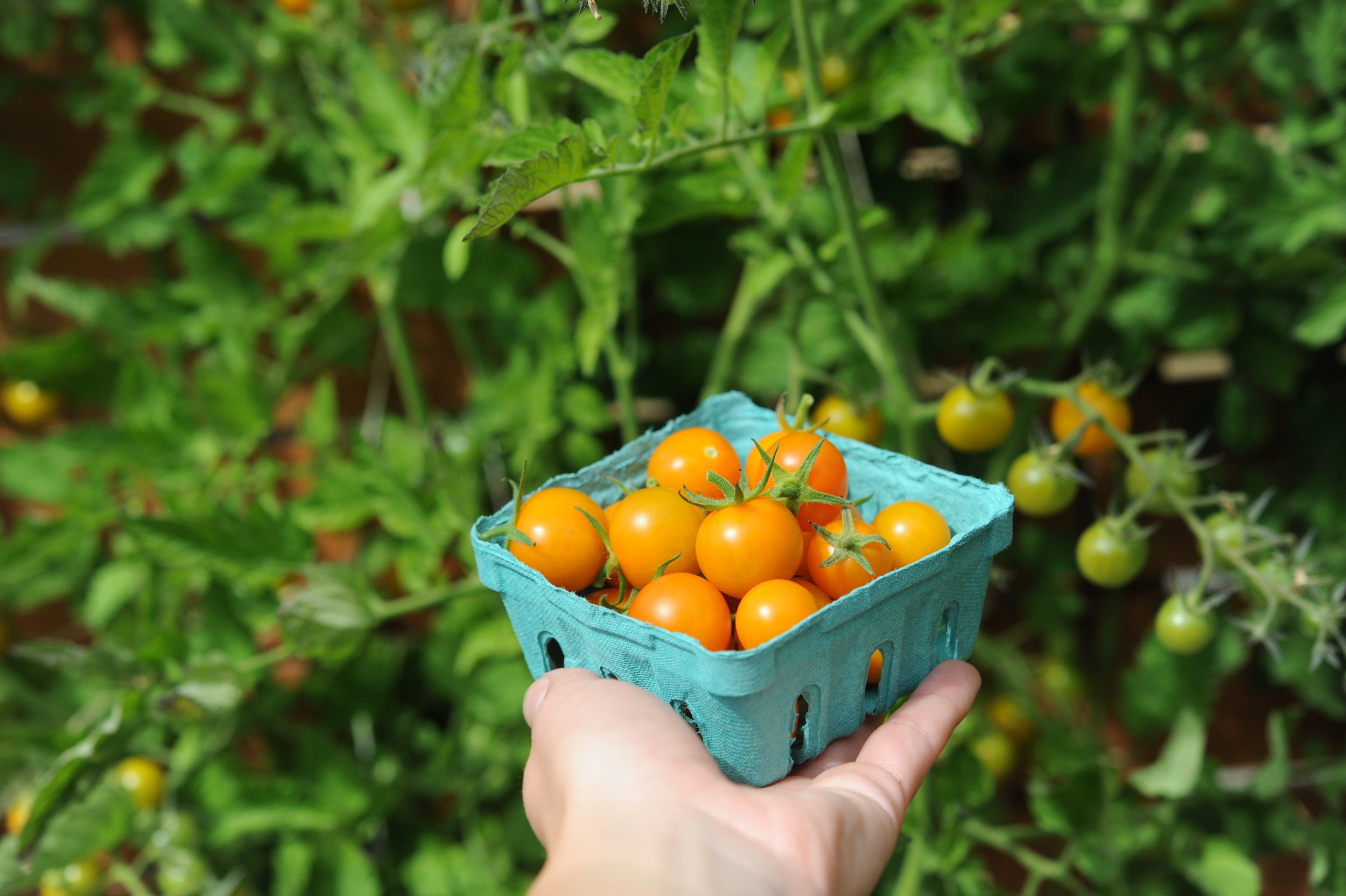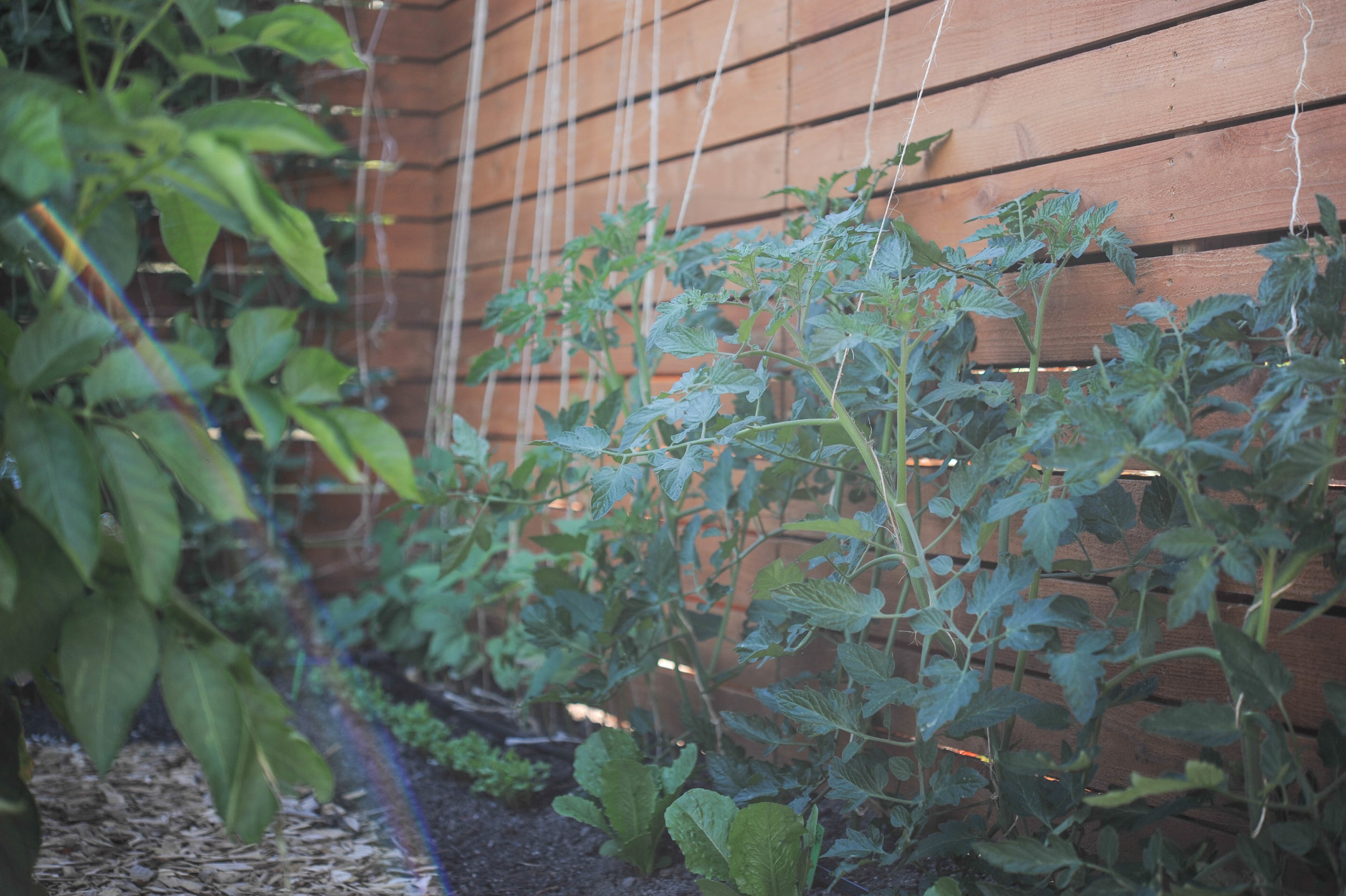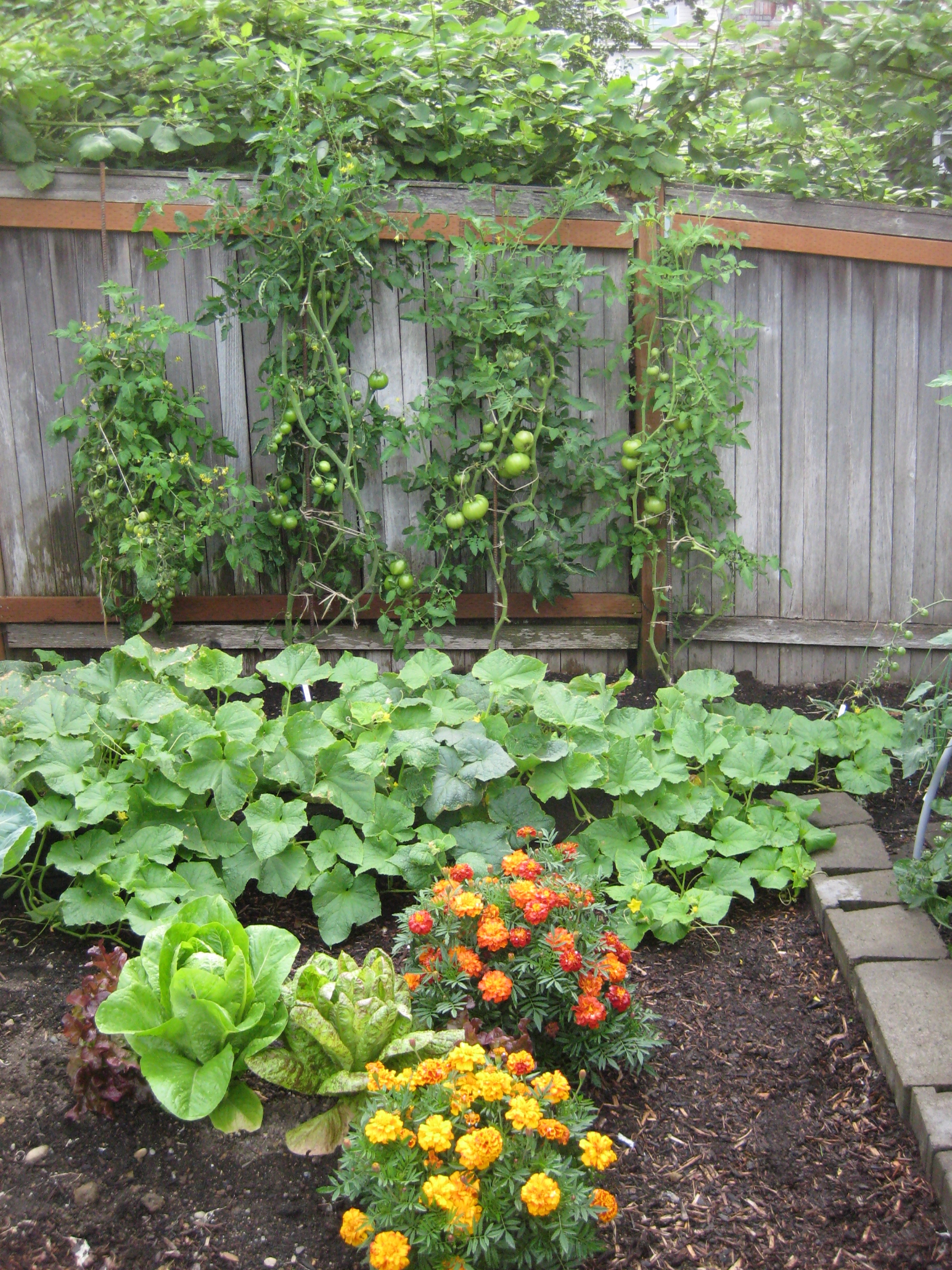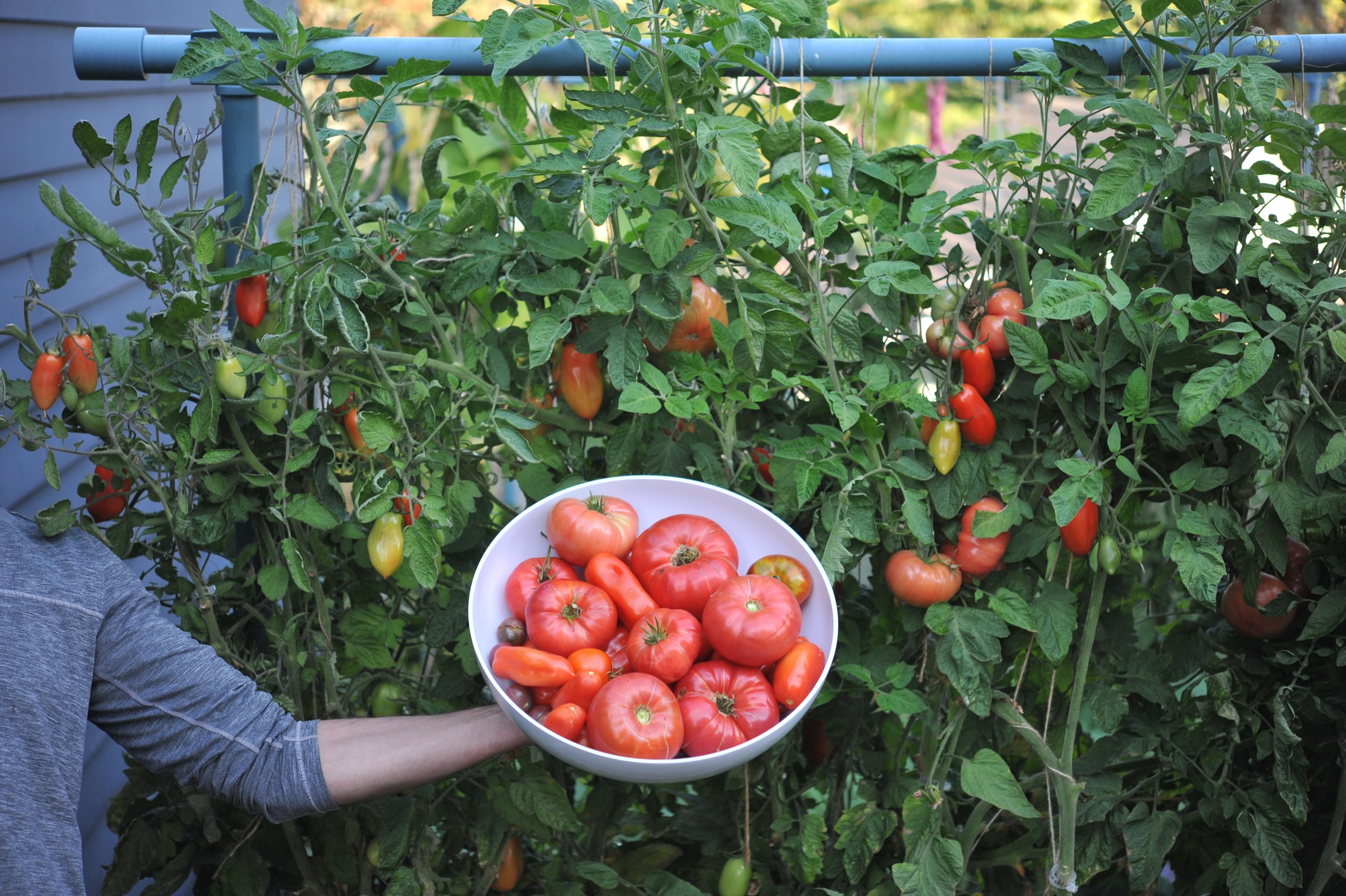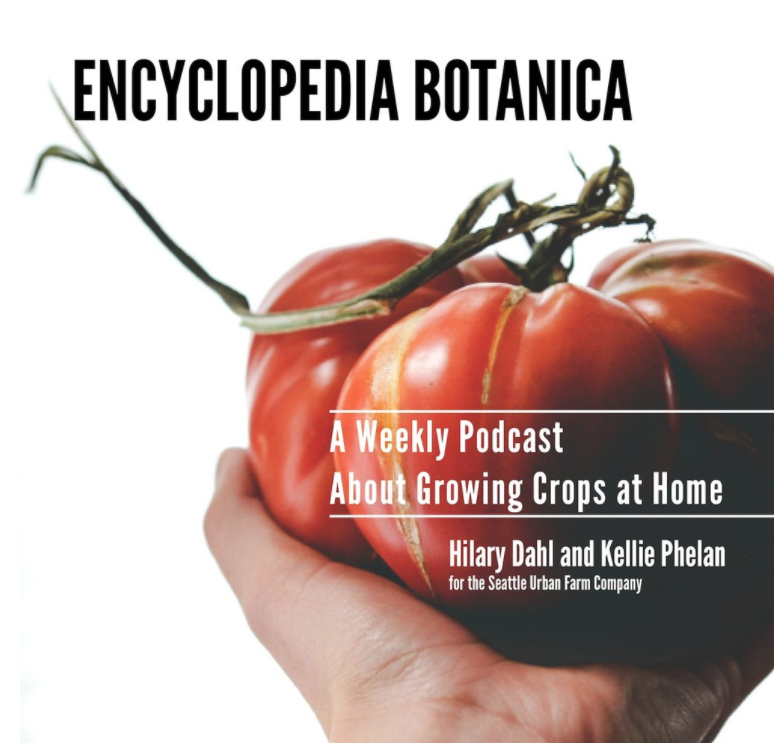Tomatoes are probably the most popular garden vegetable, and for good reason; they're versatile, highly productive, and produce fruits that are far superior to any you can buy at the grocery store.
HOW TO LISTEN:
Listen right now in your browser by clicking above.
Subscribe in iTunes (or your favorite podcast player) to have our podcasts sent directly to your device.
SHOW NOTES:
In this episode, we discuss:
How to choose the best tomato for your space and needs
Tomato planting tips
Some of our favorite tomato varieties
Important Take-aways:
There are two main types of tomato plants you can grow. Determinate and indeterminate:
Determinate tomatoes grow to a certain height, then flower and set fruit. Traditionally, many determinate types were Roma and plum varieties, but now you can find tomato plants that will produce fruit in all shapes, sizes and colors that have been bred to be determinate. Determinate types are great for growing in containers and small spaces.
Indeterminate tomatoes, which will continue to grow larger and larger throughout the season and continue to set fruit for as long as they can before a frost sets in.
Choosing the best types of tomatoes for you and your garden can feel overwhelming. I'm going to go over some of the main categories of tomatoes to help you begin to narrow down your choices:
Cherry and Grape varieties are the small, very sweet tomatoes that are usually eaten whole.
Plum and Roma are medium sized fruit that are usually an oblong shape and are used for sauces and canning because of their low-moisture content, meaty texture, and low seed count.
Slicing and Beefsteak are the large, juicy tomatoes used for slicing on sandwiches, caprese salad, etc.
When planting tomatoes, it's crucial to start with large, healthy transplants. By large, I mean 6-8 inches tall. If you're growing in a cooler region, planting out transplant that are even larger than that can be helpful.
Tomato plants should be spaced at least 18 inches apart.
To plant tomatoes:
Pull off the lowest side branches and the bottom set of leaves on your plants (these are usually small little leaves that are coming straight off the central stem).
Dig a hole deep enough for your plant to be buried up to the next lowest set of leaves. Mix in ¼ cup of balanced fertilizer and a little extra blood meal if the leaves on your plants are yellowing at all.
Place your plant in the hole, burying the bottom of the central stem. Tomatoes set new roots straight off of their stem so planting them nice and deep will give them the opportunity to develop a large root structure, which will help the plant absorb water and nutrients.
Tomato yield is variable but you'll likely harvest 3-10 lbs per plant.
In many regions it's good to be aware of the fact that tomatoes are a long season crop. They'll be in the garden for about 6 months, but will probably only produce fruit for 3 of those months, and in some years maybe only 2. This means that you may get a really big flush of fruit at some point late in the season. This sounds like heaven, but we've found that many of our clients can get overwhelmed with the amount of fruit that is coming off of their plants late in the summer. Just be aware of this and have a plan.
Like what you hear? Please share our podcast with a friend. Subscribe on iTunes or your favorite podcast player so you never miss a beat. And we'd really appreciate you showing us some love by leaving a rating and review on iTunes.
Have a topic you'd like see us dig in to? Leave us a note in the comment section below or #EBpodcast on Instagram and Twitter!
This Week’s Co-host:
KELLIE PHELAN believes that lasting change starts at home, and that’s what she aims do to at The Works. She worked for a decade in environmental consulting, first inspired by a “light bulb” moment at 6th grade camp about how long it takes various materials to break down in the environment. A 2012 transplant to Seattle, Kellie is a self-described ole’ timey grandma, spending her free time growing food, experimenting in the kitchen, and DIYing different projects. A natural connector and a self-starter (I mean, who else teaches themselves how to knit from a library book during summer break in high school?!), Kellie is so grateful for this opportunity to lead The Works and be a part of this amazing community.
Website: www.theworksseattle.com
Instagram: @theworks.seattle
About the Host:
Hello, I’m Hilary Dahl. Outside of this podcast, my job is to help beginning and experienced growers create beautiful and productive gardens. I have the unique experience of working in on a wide range of projects, from small backyard garden plots to multi-acre vegetable farms. I also work in my own garden every day when I get home. This podcast is an opportunity to discuss seasonal garden topics and share the the joy of growing your own food.


